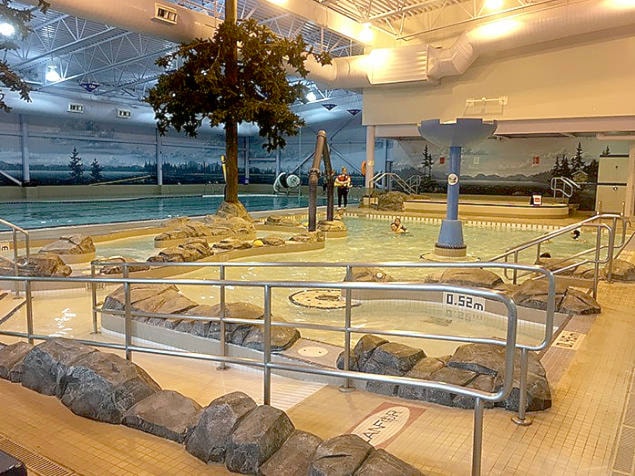The District of Houston is inching closer to its goal of a 30 per cent cost recovery of its leisure facility operating costs by increasing user fees.
Looking at financial data dating back to 2014, District staffers determined leisure facility user fees work out to between 20 per cent and 22.5 per cent of its costs.
“This is despite the fact that leisure facility user fees have not been revised since 2006 when the pool first opened, meaning that memberships, admissions and program registration volumes were increasing …. as opposed to rate increases,” staffers reported in a comprehensive report on District services and costs.
And with an across the board increase of 10 per cent, staffers continued, cost recovery is estimated to be just over 24 per cent.
General revenues provide the rest of the monies to maintain and run the leisure facility.
But recreation programs will continue to be charged at cost based on a predetermined number of minimum users to run a particular program.
Staffers also noted that there likely won’t be an increase in leisure facility users to come closer to the 30 per cent cost recovery target.
“This is reflective of trends in recreational activities wherein only a portion of a given population will participate in any given recreation activity,” they added.
“Current memberships amount to approximately 40 per cent of the census population, with seniors representing the largest portion of users at 56.9 per cent of total potential census users.”
Staffers also recommended that the non-resident rate be discontinued, adding that several non-residents from around the area pay regular visits to the leisure facility.
“There are also issues with the program, as owners property within the District are still eligible to be considered residents despite not residing in the municipality,” they added.
“This has also been a source of customer dissatisfaction, given that non-residents pay 25 per cent more than resident users do for the same service.”
When program revenue, merchandise sales, single visit and membership are projected for the coming year, estimated revenue is pegged at $218,985, an increase of 9.8 per cent over 2018 for a projected cost recovery of 24.05 per cent.
